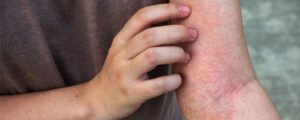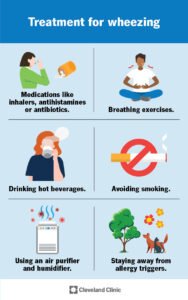Pectineus Pain_ Causes and Treatment
Pectineus Muscle Pain: Causes, Symptoms, and Treatment Options
Introduction to Pectineus Muscle Pain
The pectineus muscle, located in the groin and upper thigh, plays a crucial role in hip flexion and adduction. It is part of the adductor muscle group and helps move your leg toward the body. When injured, it can cause pain in the groin or thigh. This pain can range from a dull ache to a sharp, sudden discomfort. The most common cause of pectineus pain is muscle strain or a pulled muscle, often due to intense physical activity or prolonged awkward positioning.
Anatomy of the Pectineus Muscle
The pectineus muscle originates from the pectineal line of the pubic bone, also known as the pectin pubis. It travels downward and inserts into the pectineal line of the femur (thigh bone). This muscle is positioned anteriorly among the hip adductors, which also include:
-
Adductor Brevis
-
Adductor Longus
-
Adductor Magnus
-
Gracilis
The pectineus plays a vital role in adduction (bringing the leg toward the body), flexion (bending the hip), and external rotation of the hip. It works in tandem with the other hip adductors for optimal leg movement.
Common Causes of Pectineus Pain
Pectineus pain typically arises from overstretching or sudden movements involving the leg. Common activities and movements that can lead to injury include:
-
Running or sudden changes in direction during sports
-
Engaging in exercise with fatigued muscles
-
Poor stretching techniques
-
Kicking or jumping in sports like soccer or basketball
-
Prolonged sitting with legs crossed
-
Skating or sprinting
Risk Factors for Pectineus Injury
Several factors may increase the risk of developing pectineus pain, including:
-
Age and decreased range of motion
-
Inadequate fitness or warm-up in athletes
-
Previous injuries to the hip or groin
-
Weakened adductor muscles
Understanding Groin Strain and Its Link to Pectineus Pain
A common cause of pectineus pain is a groin strain. This occurs when the inner thigh muscles, including the pectineus, are overstretched or torn. Groin strains are classified into three grades:
-
Grade 1: Mild overstretching or tearing, affecting up to 5% of muscle fibers.
-
Grade 2: A more significant tear in muscle fibers.
-
Grade 3: Complete tear or rupture of the muscle or tendon.
Groin strains often affect the hip flexors or adductors and can range from mild discomfort to severe pain.
Less Common Causes of Pectineus Pain
In addition to muscle strain, other conditions can cause pectineus-related pain, including:
-
Bursitis of the hip
-
Hip fractures
-
Stress fractures in the pelvic region
Symptoms of Pectineus Pain
Pectineus muscle pain can manifest as:
-
Discomfort in the groin or front of the hip, particularly when raising the leg or bending the knee.
-
A popping or snapping sensation at the time of injury.
-
Bruising, swelling, and tenderness in the affected area.
-
Limited movement and stiffness in the hip or thigh.
Depending on the severity, pain may range from mild to severe and can impede regular activities.
When to Seek Medical Help
While some pectineus injuries can be treated with rest and self-care, it is important to consult a healthcare provider if:
-
Severe pain or swelling develops in the groin area.
-
Bruising or color changes appear in the upper thigh.
-
Tingling, weakness, or numbness affects the groin or leg.
-
You are unable to move your leg or put weight on it.
-
Your symptoms do not improve with rest or home treatment.
Diagnosing Pectineus Pain
A healthcare provider will conduct a physical exam to assess the pain and range of motion. You may be asked about the onset and nature of your symptoms. Further imaging tests like MRI or ultrasound may be recommended to examine the extent of muscle, tendon, or ligament damage.
Treatment for Pectineus Muscle Injury
Treatment for pectineus injuries depends on the severity of the injury. Mild strains may heal with rest and self-care, while more serious injuries could require medical intervention. Initial treatment often follows the P.R.I.C.E. method:
-
Protection: Avoid activities that could exacerbate the injury.
-
Rest: Give the muscle time to heal.
-
Ice: Apply ice packs to reduce swelling and pain.
-
Compression: Use compression garments to minimize swelling.
-
Elevation: Keep the affected leg elevated to reduce inflammation.
Pain relief may involve non-steroidal anti-inflammatory drugs (NSAIDs) or acetaminophen. For more severe injuries, physical therapy, and, in rare cases, surgery, may be necessary.
Recovery and Rehabilitation
Recovery from a pectineus muscle strain typically takes anywhere from a few weeks to several months, depending on the severity. For minor strains, recovery may take up to six weeks. Severe strains or tears could require up to three months for full recovery, and rehabilitation exercises are often needed to restore strength and flexibility.
Conclusion
Pectineus pain can significantly impact your ability to perform everyday activities, but with the right treatment and care, most individuals can recover fully. Proper warm-up, stretching, and strengthening exercises can help prevent future injuries. If you experience persistent or severe symptoms, consult a healthcare professional for a comprehensive treatment plan.
Frequently Asked Questions
-
Where is the pectineus muscle located? The pectineus muscle is located in the groin and upper thigh, originating from the pubic bone and inserting into the femur.
-
What is the function of the pectineus muscle? The pectineus muscle is responsible for flexing, adducting, and externally rotating the hip.
-
What causes pectineus pain? Pectineus pain is typically caused by muscle strain, overstretching, or sudden movements, particularly during physical activities or sports.
-
What are the less common causes of pectineus pain? Less common causes include hip bursitis, hip fractures, and stress fractures in the pelvis.
-
How does pectineus pain feel? Symptoms include pain in the groin or thigh, bruising, swelling, and stiffness. Severe cases may result in difficulty moving the leg.
Expert Tips for Prevention and Recovery
-
Warm-up properly before engaging in sports or intense physical activities.
-
Incorporate flexibility and strength training exercises to maintain muscle health.
-
Rest adequately to allow for muscle recovery and reduce the risk of injury.
By understanding the anatomy and causes of pectineus pain, you can take proactive steps to prevent and treat this common issue effectively.




